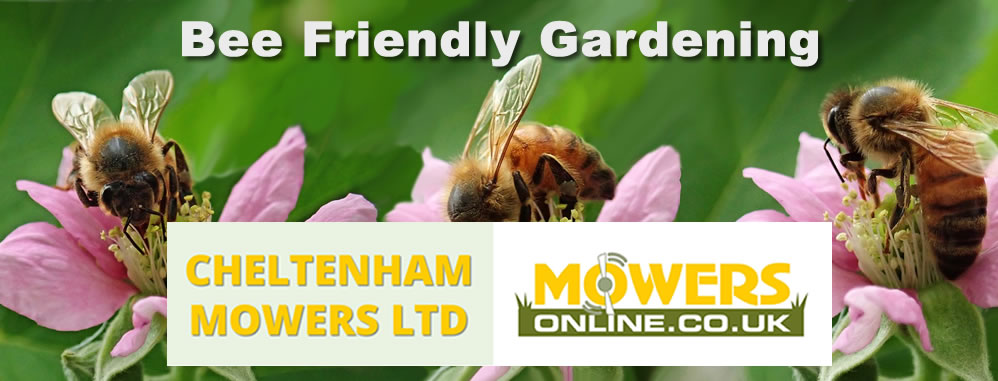
Save the bees! Leave the grass to grow they say! Don’t weed out the dandelions they say!
Thank you for reading this post, don't forget to subscribe!Figures state that 97% of wildflower meadows have been lost since the 1930s and even with the UK and EU voting to ban harmful neonicotinoids on all outdoor crops there’s more to be done to future proof bee lives. We are all for supporting bees and increasing their numbers, but we do like a neatly trimmed, weed-free lawn.
So how do we bump up the buzz in the back garden without sacrificing our investments in our beautifully striped lawn? We have a few tips on creating a bee friendly area in your garden.
Fight bugs with natural ingredients
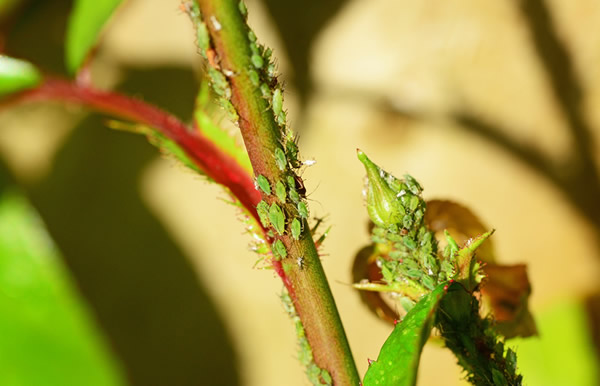
Preparing a natural insecticide is the best way to promote biodiversity and protect wildlife and our own lungs. We advise you to read the label of any shop bought natural pesticides, sometimes natural doesn’t mean non-harmful. Some products claim to be organic or natural but still contain high amounts of vinegar, copper or extract of chrysanthemum (which is harmful to bees). Here’s a simple recipe that can be prepared using household cupboard staples:
Garlic Pesticide Recipe
- Puree two whole bulbs of garlic with half pint of water and infuse overnight.
- Strain it through a fine sieve into a medium sized style jar
- Add 250ml vegetable oil and one teaspoon of non-bleach liquid soap such as castille liquid soap
- Top up the jar with water and store away from sunlight.
When ready to combine 250ml of the mixture with a litre of water and using a spray gun apply to the infested plants.
Flower boxes and containers
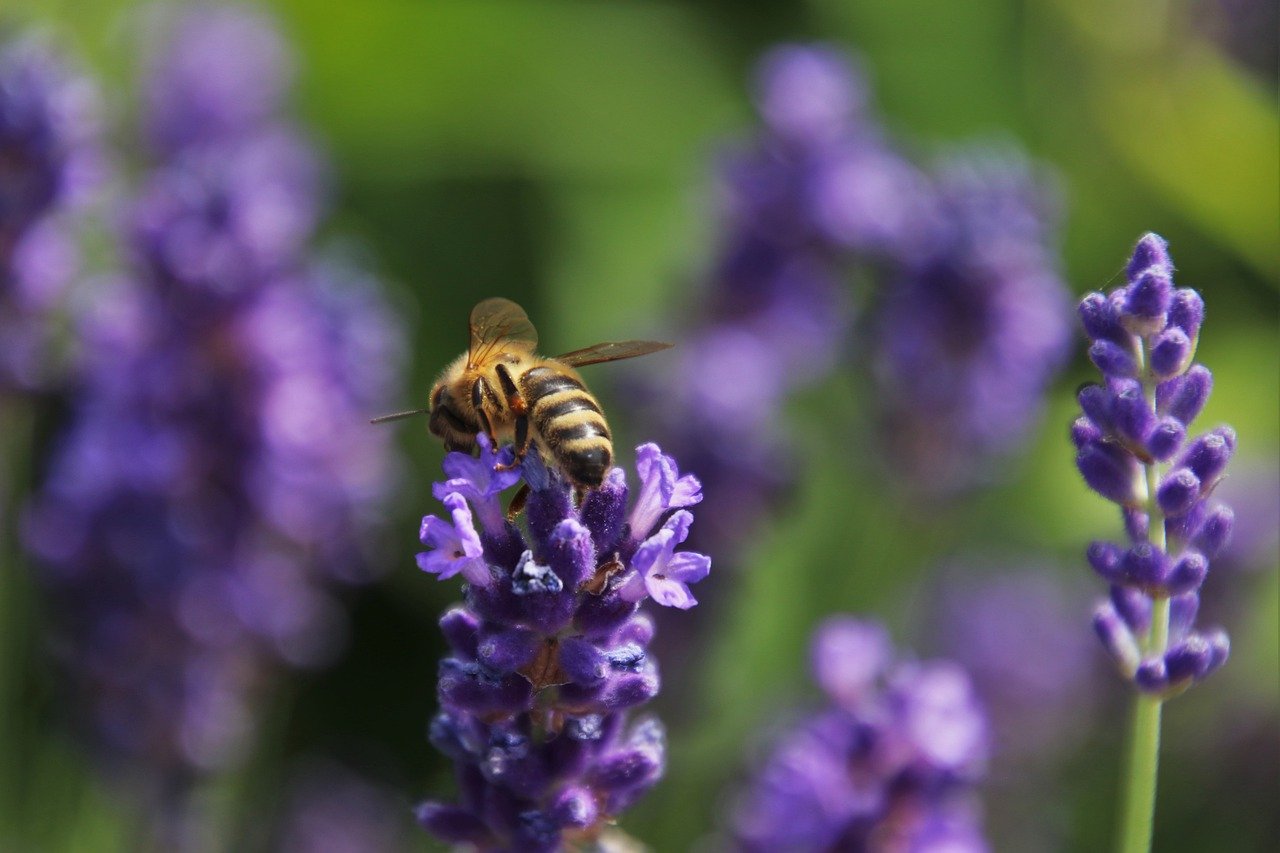
Fixing flower boxes to walls or window boxes is a good way of creating a low maintenance and confined wildflower area in the garden. Snap dragons, nasturtiums, forget-me-not and wild strawberries are a great choice for containers and for bees. Dahlia are a very popular choice for containers and an excellent provider of nectar. Lobularia maritima or Sweet Alison is often used in containers and although small, the masses of tiny flowers give a blanket of nourishment for bees and butterflies.
Add height to borders
Tall and tubular plants are perfect for bumble bees, they can crawl inside and safely collect the nectar. Planting foxgloves, lupin and hollyhocks at the back of a border or up against fences will not only look fantastic but provide the sheltered feeding area for bees. Tall rose varieties are a crowd pleaser for bees and can work adjacent to any fence or wall in the garden. Lavender is featured in most gardens and comes in many varieties and colours. It’s hardy and a great filler for borders, plant it and before you know it your garden will be humming with the sound of bees.
Climbing the Walls
Pergolas and arbours make an optimal stronghold for climbing species such as honeysuckle and passionflower, they are also a sweet favourite for honeybees. A more unusual choice of climbing plant attractive to bees is hops, Humulus lupulus ‘Aureus’ as it’s known is hardy and fast growing.
Let the grass grow
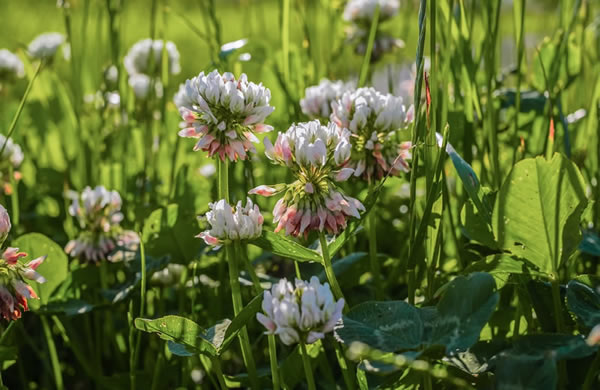
If you have a large lawn and wouldn’t miss dedicating a small area to nature, letting buttercups, dandelions and clover grow will provide a constant banquet for bees from very early Spring to late Autumn. Mulching grass cuttings using a dedicated mulching mower will create a natural nutrient-rich fertiliser for informal grass areas.
Small Sanctuary
Leaving a small border for sowing wildflowers can make a significant difference to bee nectar reserves. Small areas do require more preparation, it is advisable to cover the border with a weed suppressing membrane or plastic for a few months before sowing to suffocate any weeds. A few passes with a tiller or cultivator will prepare a perfect soil consistency for germination. Wildflower seed packs can be sown throughout the year and usually appear within three months of sowing. It’s important to note that most shop bought wildflower seed mixes could contain non-native species and should not be introduced to borders close to conservation areas or natural countryside.
It is possible for formal lawn and wild garden to coexist with forward planning and thoughtful planting. Bees have been named the most important being on the planet and any changes we can make to help them prosper is a step towards safeguarding their future.
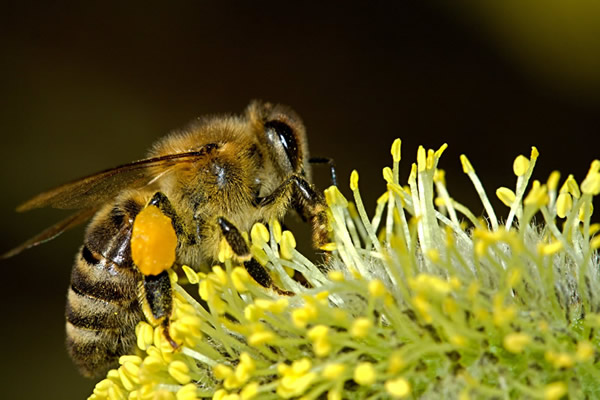
Further information and resources on what we can do to help Save the Bees can be found below:
https://friendsoftheearth.uk/bees
https://www.wildlifetrusts.org/wildlife-and-wild-places/saving-species/save-bees-and-pollinators
https://www.bumblebeeconservation.org/
https://www.wwf.org.uk/updates/how-bee-friendly
